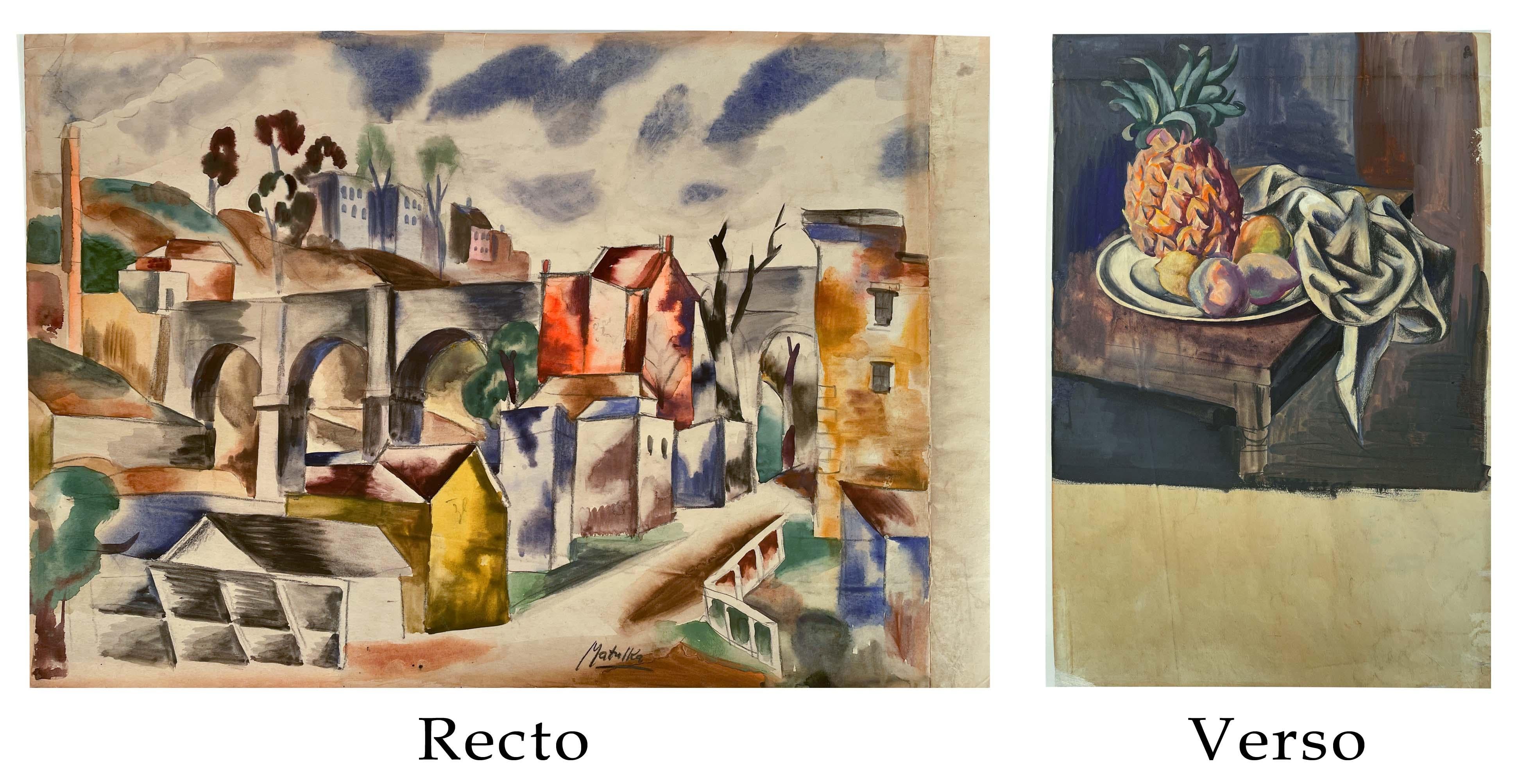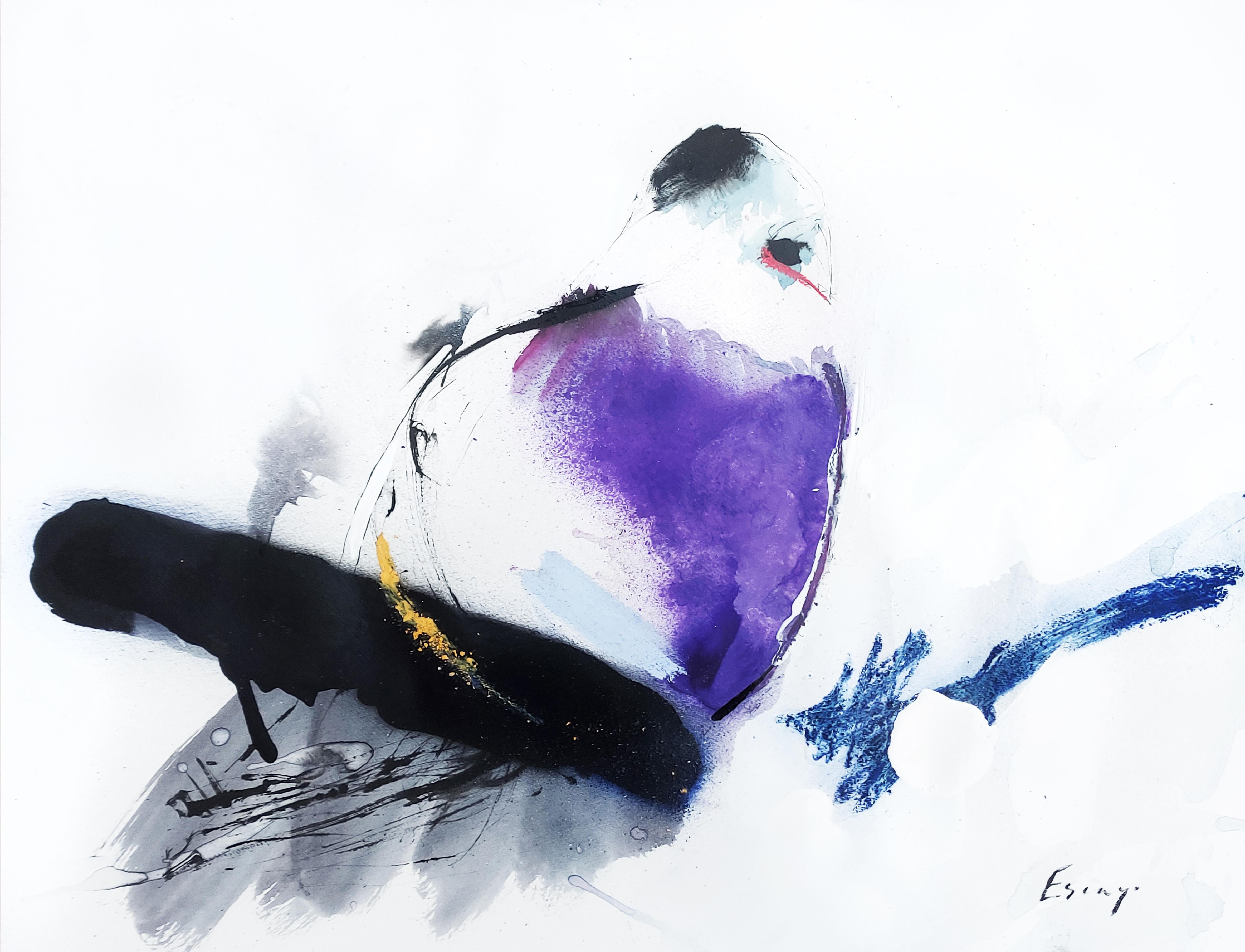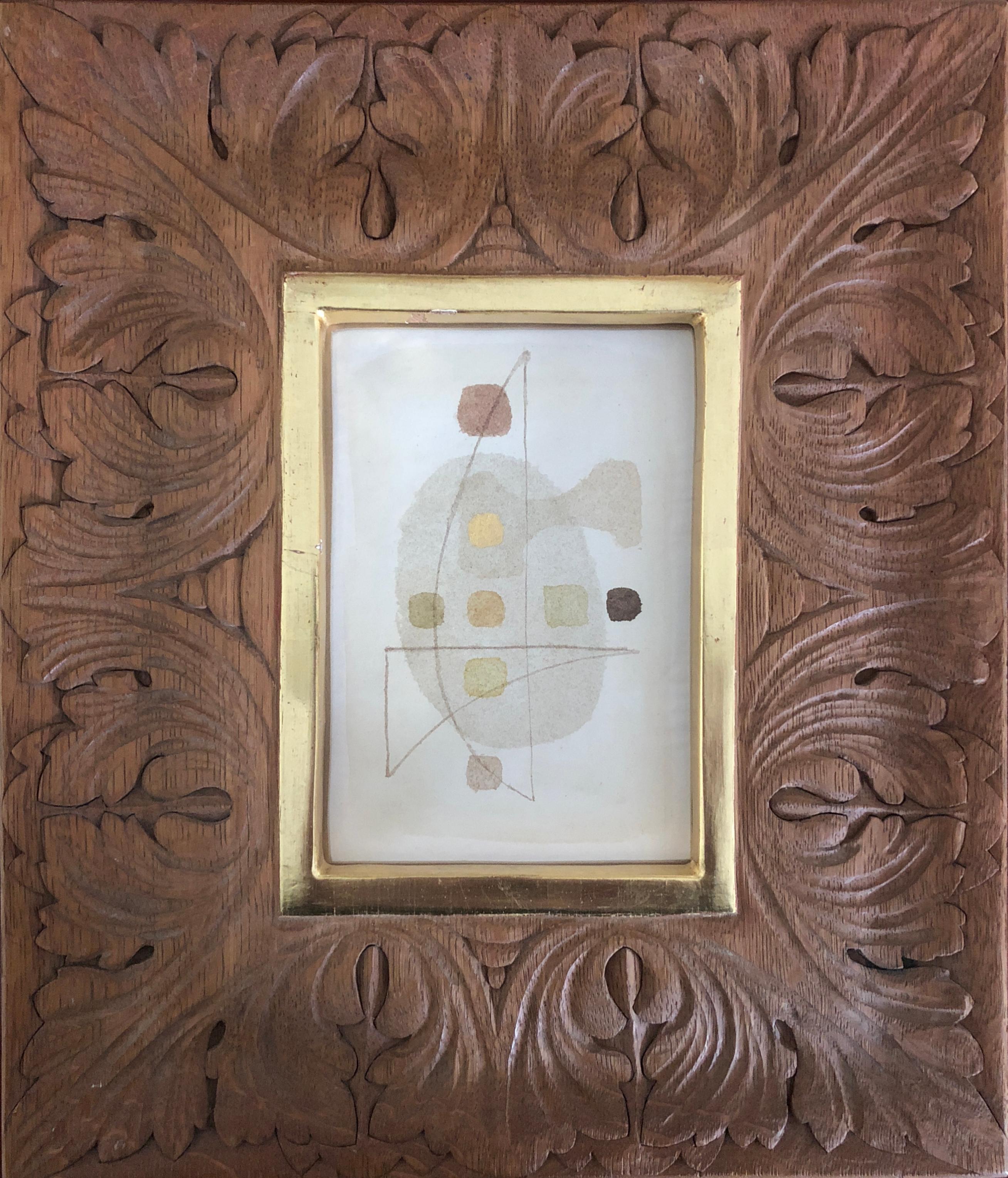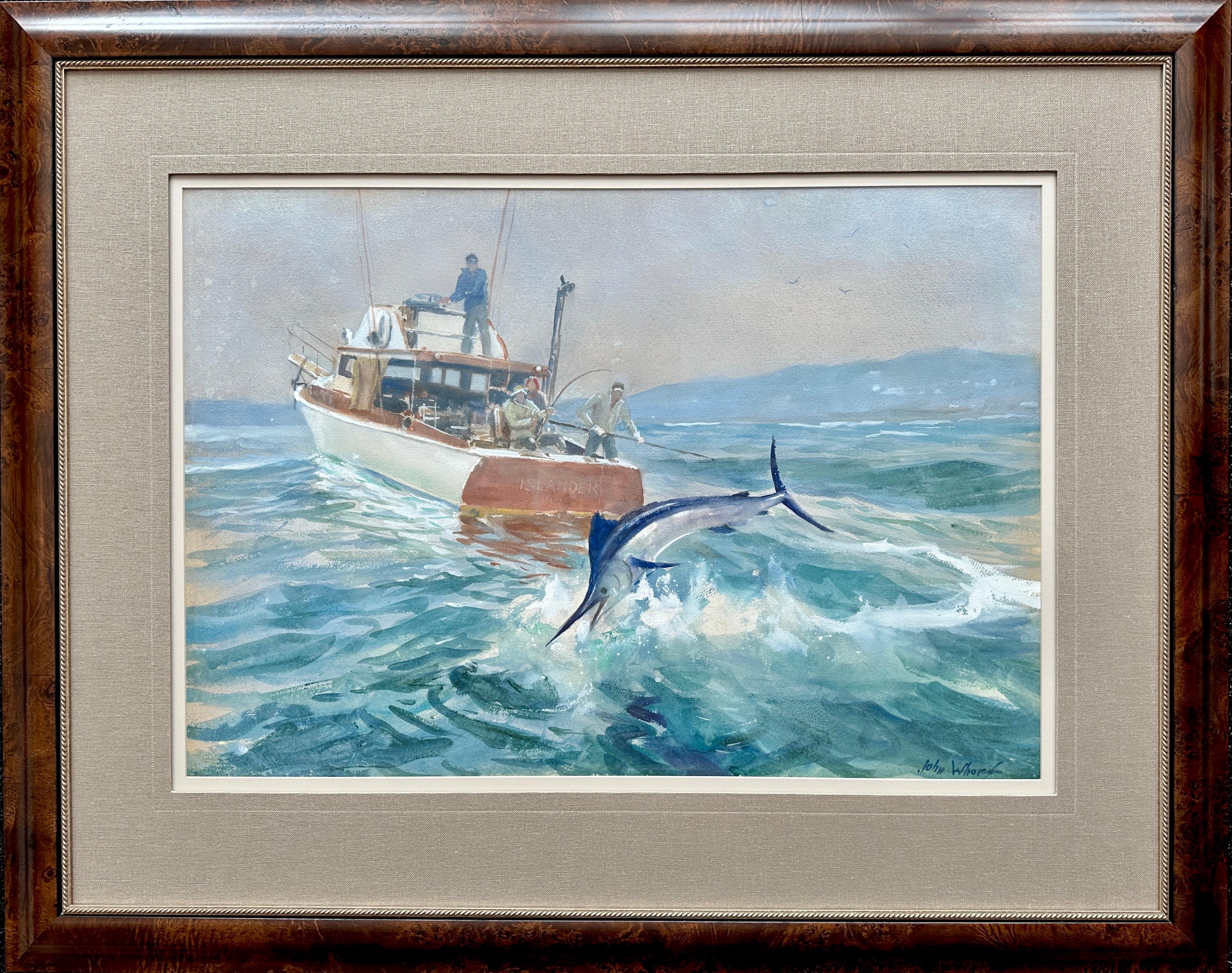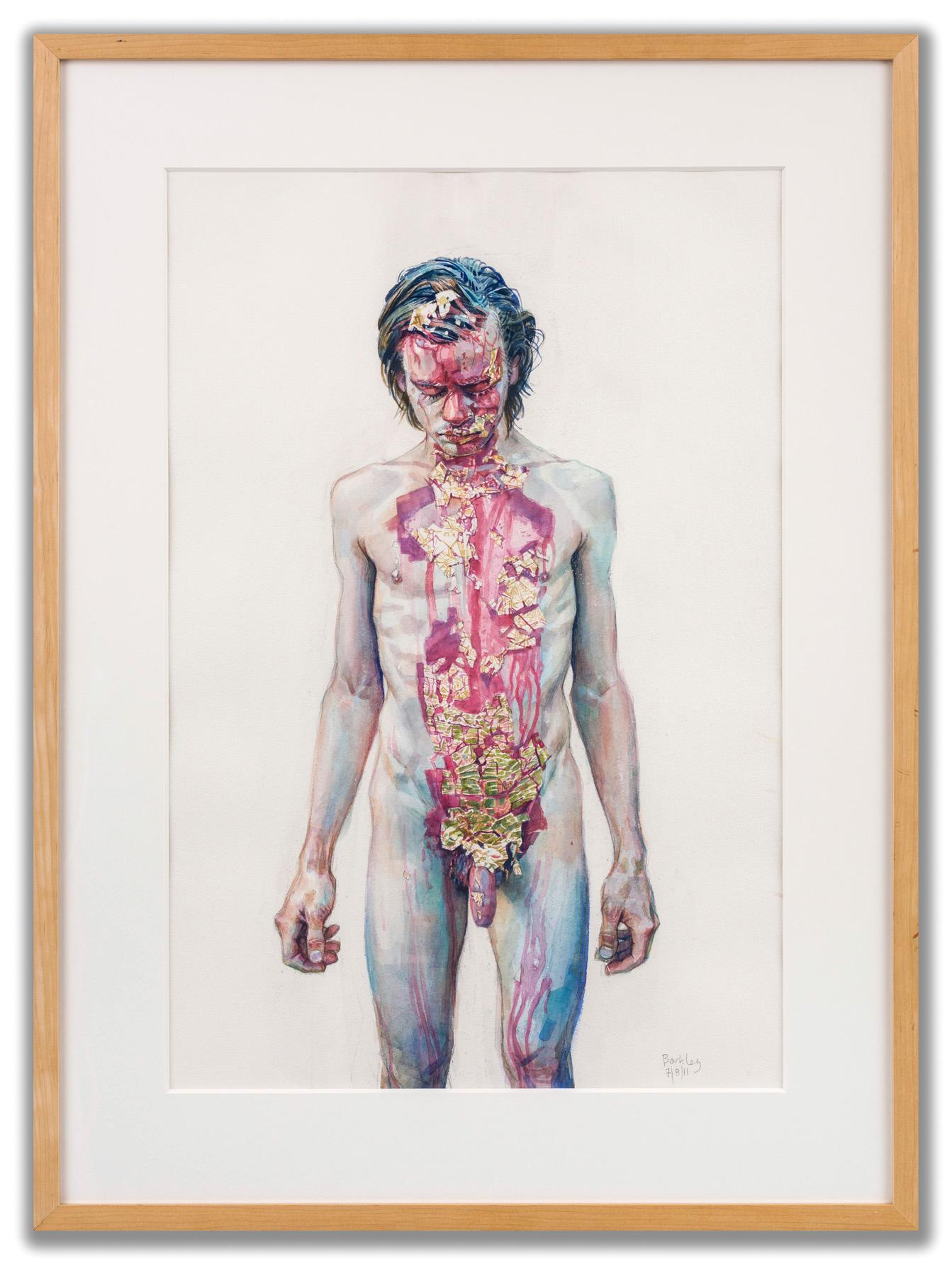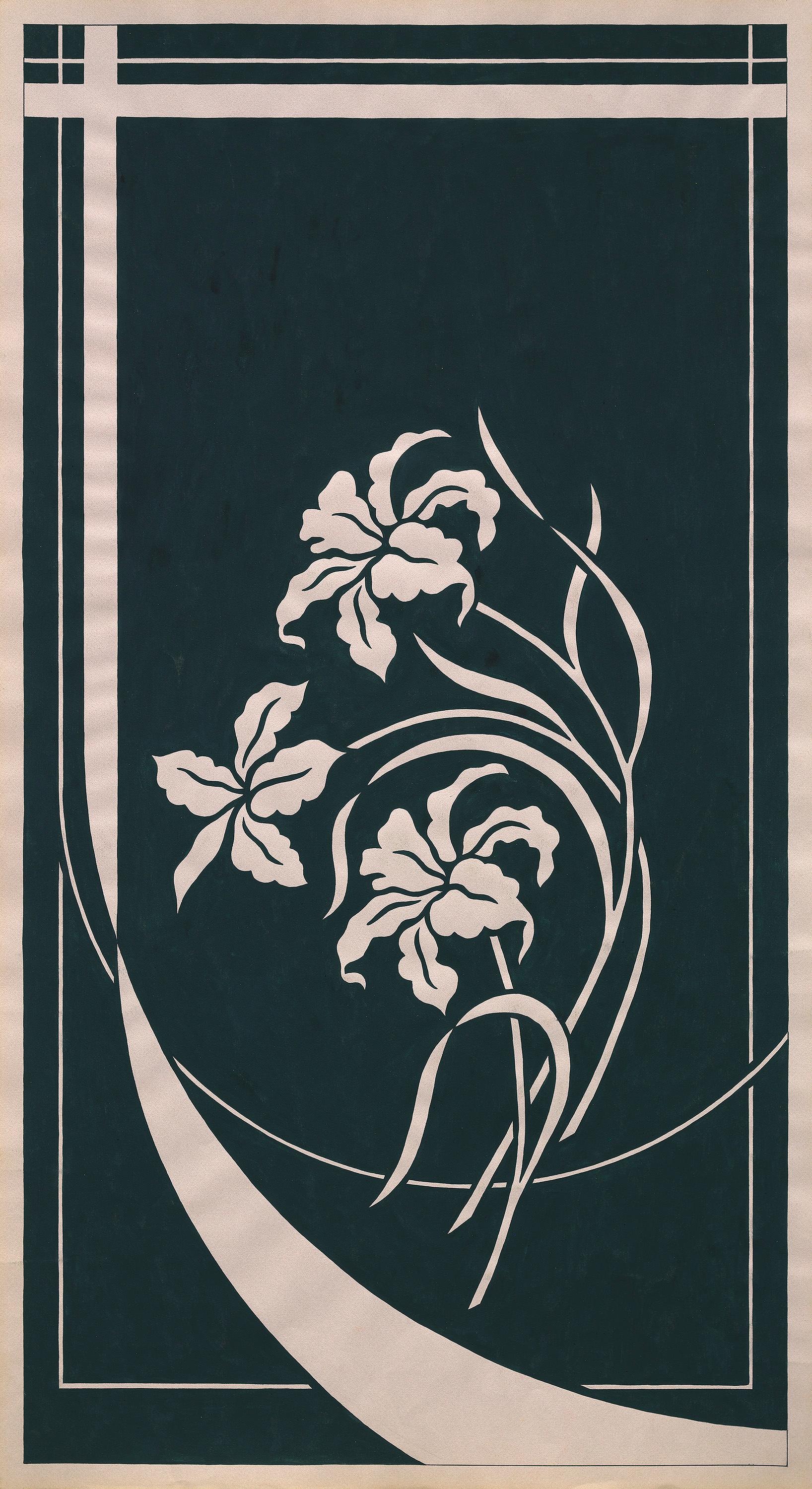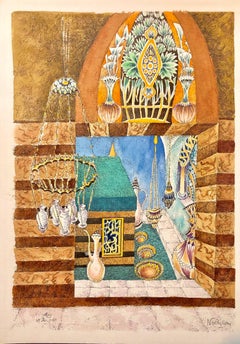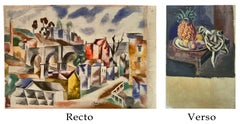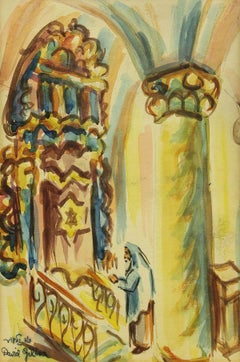
Synagogue Interior Safed, Israel
View Similar Items
Want more images or videos?
Request additional images or videos from the seller
1 of 2
David GilboaSynagogue Interior Safed, Israel
About the Item
- Creator:David Gilboa (1910 - 1976)
- Dimensions:Height: 10 in (25.4 cm)Width: 6 in (15.24 cm)
- Medium:
- Movement & Style:
- Period:
- Condition:back of board a bit rough. it is unframed.
- Gallery Location:Surfside, FL
- Reference Number:1stDibs: LU3822026633
About the Seller
4.9
Platinum Seller
These expertly vetted sellers are 1stDibs' most experienced sellers and are rated highest by our customers.
Established in 1995
1stDibs seller since 2014
1,550 sales on 1stDibs
Typical response time: 1 hour
More From This SellerView All
- Machpela Cave Chevron 1969 Israeli Judaica Mixed Media Print Watercolor PaintingBy Baruch NachshonLocated in Surfside, FLBaruch Nachshon, was born in Mandatory Palestine in 1939, in the city of Haifa. Nachshon began to paint in early childhood, and developed his relationship to art and to artists throu...Category
1960s Modern Landscape Drawings and Watercolors
MaterialsWatercolor
- Machpela Cave Chevron 1967 Israeli Judaica Mixed Media Print Watercolor PaintingBy Baruch NachshonLocated in Surfside, FLBaruch Nachshon, was born in Mandatory Palestine in 1939, in the city of Haifa. Nachshon began to paint in early childhood, and developed his relationship to art and to artists throu...Category
1960s Modern Landscape Drawings and Watercolors
MaterialsWatercolor
- Israeli Modernist Safed Synagogue Interior Folk Art Watercolor PaintingBy Zvi EhrmanLocated in Surfside, FLIn this piece the artist choice of colors is vibrant, and there is minimal blending of them. The artist takes a naive, Folk Art approach at rendering the subject simplifying the figu...Category
Mid-20th Century Modern Landscape Drawings and Watercolors
MaterialsPaper, Watercolor
- 1930's Tremont Temple, Judaica Watercolor, Bronx New York CityBy Ben GanzLocated in Surfside, FLSigned Judaic synagogue watercolor by Jewish American artist Ben Ganz. He depicts the front gates of the Tremont Temple, Bronx New York from 1939. The art...Category
20th Century Modern Landscape Drawings and Watercolors
MaterialsWatercolor
- Modernist Abstract Expressionist Watercolor Painting Bauhaus Weimar ArtistBy Pawel KontnyLocated in Surfside, FLAbstract watercolor composition bearing the influence of the earlier color-block compositions of Paul Klee. Pawel August Kontny, (Polish-German-American artist) He was born in Laurahuette, Poland, in 1923, the son of a wealthy pastry shop owner. In 1939 he began studying architecture in Breslau where he was introduced to the European masters and to the work of some of the German Expressionists, soon afterward banned as "degenerate artists" and removed from museums throughout Germany by the Nazi regime. His studies were interrupted by World War II. Drafted into the German army, traveling in many countries as a soldier, he sketched various landscapes but in 1945, he was captured and held as a prisoner of war in Italy. After the war, he studied at the Union of Nuremberg Architects to help design buildings to replace ones destroyed in the war. He recorded his impressions of the local population and the landscapes through his watercolors and drawings. Pawel Kontny thereafter moved to Nuremberg, Germany, becoming a member of the Union of Nuremberg Architects and helping to rebuild the city's historic center. He soon decided to concentrate on his professional art career. He married Irmgard Laurer, a dancer with the Nuremberg Opera. Pavel Kontny 's career as an artist was launched with his participation in an all German exhibition, held at the Dusseldorf Museum in 1952. He held one-man shows in Germany, Switzerland and the United States. During his trip to the United States in 1960, Kontny became instantly enamored with Colorado, and decided to relocate to Cherry Hills with his wife and two children. He quickly established himself in the local art community, being affiliated for a time with Denver Art Galleries and Saks Galleries. His subject matter became the Southwest. During this time he received the Prestigious Gold Medal of the Art Academy of Rome. His extensive travel provided material for the paintings he did using his hallmark marble dust technique. he also worked equally in pastel, watercolor, charcoal and pencil-and-ink. in a style which merged abstraction and realist styles, influenced by Abstract Expressionist painting and South Western American landscapes. In the early 1960s he was one of only a few European-born professional artists in the state, a select group that included Herbert Bayer (1900-1985), a member of the prewar Bauhaus in Weimar and Dessau, Germany, and Roland Detre (1903-2001), a Hungarian modernist painter. As a Denver, Colorado resident, Pavel Kontny exhibited at galleries and museums throughout the United States, Germany and Japan. There, he was inspired by frequent trips to Native American pueblos in the Southwest, as well as by the study of the Plains Indians of Montana and Wyoming. Over the years Kontny had a number of students and generously helped young artist by hosting exhibitions at his Cherry Hills home. For many years he generously donated his paintings to support charitable causes in Denver. Influences during his European years included German pastelist C.O. Muller, German Informel painter Karl Dahmen and Swiss artist, Hans Erni. In the early 1950s his painting style showed the influence of the Die Brücke (The Bridge), a group of German expressionist artists formed in Dresden in 1905 who had a major impact on the evolution of modern art in the twentieth century in Germany. By the middle of the decade his style incorporated more referential abstraction and total abstraction, resulting in part from his study of Hans Hartung, a German artist based in Paris who exhibited his gestural abstract work in Germany. His work also bears the influence of Sam Francis. The American moon landing in 1969 inspired Paul Kontny...Category
Mid-20th Century American Modern Abstract Drawings and Watercolors
MaterialsWatercolor, Archival Paper
- Modernist Abstract Expressionist Watercolor Painting Bauhaus Weimar Pawel KontnyBy Pawel KontnyLocated in Surfside, FLAbstract watercolor composition bearing the influence of the earlier color-block compositions of Paul Klee. Pawel August Kontny, (Polish-German-American artist) He was born in Laurahuette, Poland, in 1923, the son of a wealthy pastry shop owner. In 1939 he began studying architecture in Breslau where he was introduced to the European masters and to the work of some of the German Expressionists, soon afterward banned as "degenerate artists" and removed from museums throughout Germany by the Nazi regime. His studies were interrupted by World War II. Drafted into the German army, traveling in many countries as a soldier, he sketched various landscapes but in 1945, he was captured and held as a prisoner of war in Italy. After the war, he studied at the Union of Nuremberg Architects to help design buildings to replace ones destroyed in the war. He recorded his impressions of the local population and the landscapes through his watercolors and drawings. Pawel Kontny thereafter moved to Nuremberg, Germany, becoming a member of the Union of Nuremberg Architects and helping to rebuild the city's historic center. He soon decided to concentrate on his professional art career. He married Irmgard Laurer, a dancer with the Nuremberg Opera. Pavel Kontny 's career as an artist was launched with his participation in an all German exhibition, held at the Dusseldorf Museum in 1952. He held one-man shows in Germany, Switzerland and the United States. During his trip to the United States in 1960, Kontny became instantly enamored with Colorado, and decided to relocate to Cherry Hills with his wife and two children. He quickly established himself in the local art community, being affiliated for a time with Denver Art Galleries and Saks Galleries. His subject matter became the Southwest. During this time he received the Prestigious Gold Medal of the Art Academy of Rome. His extensive travel provided material for the paintings he did using his hallmark marble dust technique. he also worked equally in pastel, watercolor, charcoal and pencil-and-ink. in a style which merged abstraction and realist styles, influenced by Abstract Expressionist painting and South Western American landscapes. This one bears the influence of Sam Francis. In the early 1960s he was one of only a few European-born professional artists in the state, a select group that included Herbert Bayer (1900-1985), a member of the prewar Bauhaus in Weimar and Dessau, Germany, and Roland Detre (1903-2001), a Hungarian modernist painter. As a Denver, Colorado resident, Pavel Kontny exhibited at galleries and museums throughout the United States, Germany and Japan. There, he was inspired by frequent trips to Native American pueblos in the Southwest, as well as by the study of the Plains Indians of Montana and Wyoming. Over the years Kontny had a number of students and generously helped young artist by hosting exhibitions at his Cherry Hills home. For many years he generously donated his paintings to support charitable causes in Denver. Influences during his European years included German pastelist C.O. Muller, German Informel painter Karl Dahmen and Swiss artist, Hans Erni. In the early 1950s his painting style showed the influence of the Die Brücke (The Bridge), a group of German expressionist artists formed in Dresden in 1905 who had a major impact on the evolution of modern art in the twentieth century in Germany. By the middle of the decade his style incorporated more referential abstraction and total abstraction, resulting in part from his study of Hans Hartung, a German artist based in Paris who exhibited his gestural abstract work in Germany. The American moon landing in 1969 inspired Paul Kontny...Category
20th Century American Modern Abstract Drawings and Watercolors
MaterialsWatercolor, Archival Paper
You May Also Like
- Recto: "Cubist City Scene" Verso: "Pineapple Still Life"By Jan MatulkaLocated in New York, NYRecto: ‘Cubist City Scene’ Verso: ‘Pineapple Still Life’ by Jan Matulka (1890-1972) Pencil, colored pencil, and watercolor on paper 14 ¼ x 27 ½ inches unfr...Category
20th Century Modern Landscape Drawings and Watercolors
MaterialsPencil, Watercolor
- 'Wiltshire, Winter light'. mixed media on paper, circa 2005Located in Frome, SomersetWiltshire , ' Winter Light', Salisbury Plain . Modernist/ traditional watercolor works by Andrew Gradwell. Gradwell generally paints on a large scale canvas in oils. . These studie...Category
Early 2000s Modern Landscape Drawings and Watercolors
MaterialsWatercolor
$767 Sale Price20% Off - 'Amalfi, Italy', mixed media on paper c2005Located in Frome, Somerset'Amalfi, Italy'. Mixed media on paper . circa 2005. painting 41cm x 54cm glazed frame 62cmx 82cm Atmospheric view of the seafront topography and buildings of the famous coastal town...Category
Early 2000s Modern Landscape Paintings
MaterialsWatercolor
- Saint-Germain-des-PresBy Mykola KrychevskyLocated in Bayonne, NJA beautiful watercolor depicting Saint-Germain-des-Prés by Mykola Krychevsky. It is in excellent condition, in original frame.Category
1950s Modern Landscape Drawings and Watercolors
MaterialsWatercolor
- New York CityBy Mykola KrychevskyLocated in Bayonne, NJThis is a rare watercolor by Mykola Krychevsky - his first impressions when he arrived to New York in 1955. It is possible that this is the skyline he saw from Empire State Building....Category
1950s Modern Landscape Drawings and Watercolors
MaterialsWatercolor
- Peace Bird VLocated in ARANJUEZ, ESPeace Birds is a series of 5 pieces depicting abstract birds. Rich mix media on paper with vibrant colors and strong pigments , mixing Occidental and orient...Category
2010s Modern Animal Drawings and Watercolors
MaterialsPastel, Ink, Watercolor
Recently Viewed
View AllMore Ways To Browse
Vintage Treasure Island
Robert Louis Stevenson
California Watercolor
Contemporary Pencil Drawings
Contemporary Pencil Drawing Art
Garden Drawings
Vintage Man Drawing
Pen On Paper
Watercolor Originals Color
Vintage House Drawing
Watercolour Glasses
Watercolour 1950
Contemporary Ink Drawings And Watercolors
Large Watercolors And Drawings
Watercolor Woman
Woman Watercolour
Chinese Painting On Paper
Antique Artwork Paintings
